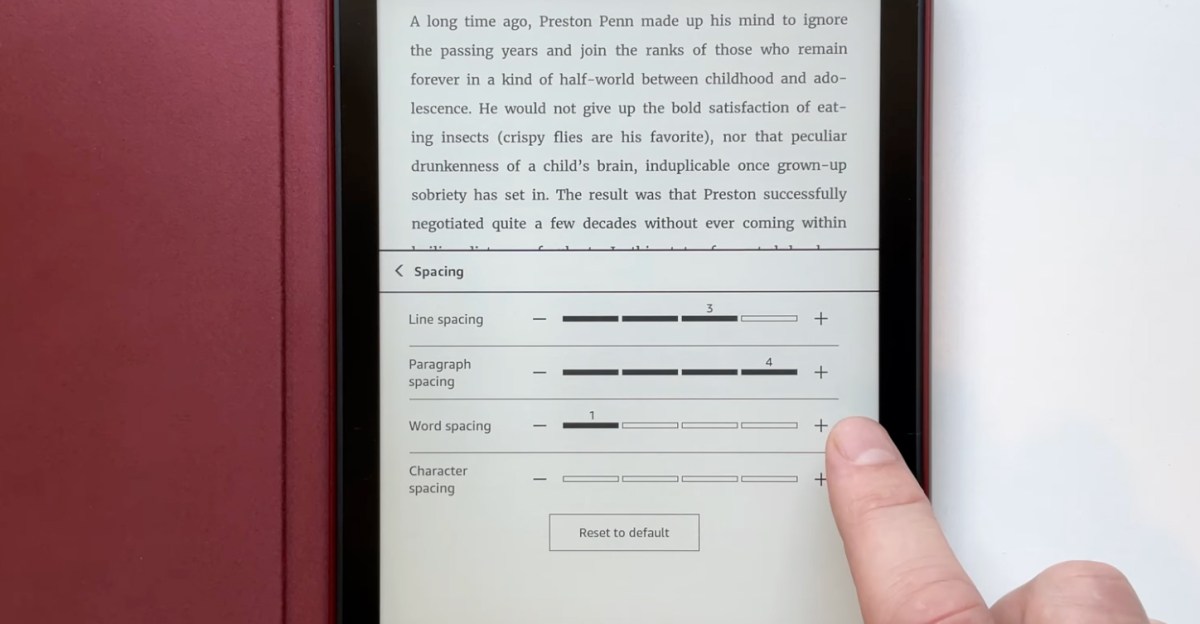What if the secret to a longer life wasn’t locked in expensive supplements or futuristic gene editing—but in a tiny structure inside your cells that most people have never heard of?
Every cell in your body carries a built-in timer, one that doesn’t tick steadily like a clock but stays quiet until, suddenly, it starts counting down. Scientists are calling it a “mortality timer”, and its trigger may be something as simple as a change in size.
In a discovery that’s turning the field of aging research on its head, scientists have found that when the nucleolus—a dense component inside the cell nucleus—grows past a certain threshold, it sets off a cascade that leads to cell death. Keep it small, and the cell stays young longer. Let it swell, and the countdown begins.
This finding doesn’t just add another detail to the biology textbook—it offers a completely new way of thinking about aging. One that may eventually reshape how we approach diseases like cancer, Alzheimer’s, and heart disease, all of which are driven in part by aging cells.
So, what exactly is this “mortality timer,” and how could something microscopic help us live longer, healthier lives? Let’s break it down.
What Is a Cellular “Mortality Timer”?
A cellular “mortality timer” is exactly what it sounds like—a biological mechanism that signals when a cell is approaching the end of its lifespan. It doesn’t tick like a watch, but it does follow a predictable pattern. And once it activates, the countdown to cell death speeds up.
The term comes from a recent discovery by scientists at Weill Cornell Medicine, who found that a structure inside cells called the nucleolus plays a central role in this timing mechanism. For most of a cell’s life, the nucleolus stays relatively small. But once it crosses a certain size threshold, things change—rapidly. The cell begins to break down, with just a few divisions left before it dies.
This isn’t just theory. In yeast cells (a go-to model for studying aging because of their biological similarities to human cells), researchers were able to delay cellular aging simply by preventing the nucleolus from growing too large. The results were dramatic: smaller nucleoli kept cells alive longer, mimicking the effects of proven longevity strategies like calorie restriction.
What makes this discovery so compelling is its universality. The same basic behavior of the nucleolus has been observed not just in yeast, but across a range of species, including humans. That suggests this “mortality timer” isn’t just a quirk of single-celled organisms—it’s a core feature of how life regulates its own aging process.
The Nucleolus: Tiny Structure, Big Impact
Tucked inside the nucleus of every cell is the nucleolus—a dense, spherical structure that rarely gets attention outside of a biology textbook. But this tiny component plays a massive role in keeping your cells, and by extension your body, alive.
The nucleolus is best known for making ribosomes, the molecular machines that assemble all the proteins your body needs to function—from muscle fibers to hormones to immune cells. To do that, it houses ribosomal DNA (rDNA), a highly repetitive and fragile part of the genome. That fragility is part of the problem. Damage to rDNA is hard to repair and, when repairs go wrong, it can cause serious disruptions in the cell’s ability to function.
As we age, something unusual happens: the nucleolus gets bigger. This isn’t just a random byproduct of aging—it’s been observed across species, from yeast to humans. And it turns out that this expansion marks the beginning of the end for the cell. Once the nucleolus grows beyond a certain size, it becomes structurally unstable. It starts letting in proteins that don’t belong there, disrupting its compartmentalization and triggering further damage to the fragile rDNA.
One of the most telling invaders is Rad52, a protein involved in DNA repair. Under normal circumstances, Rad52 stays out of the nucleolus. But when the structure becomes too large, Rad52 gets in—and instead of helping, it causes faulty repairs that destabilize the genome and accelerate cell death.
This makes the nucleolus more than just a cellular factory—it becomes a gatekeeper of cellular longevity. When it stays small and tightly regulated, cells remain stable and healthy. But when it swells, it loses control, allowing in destructive elements that fast-track the aging process.
What the Research Showed
The breakthrough came from a set of well-controlled experiments led by Dr. Jessica Tyler and Dr. J. Ignacio Gutierrez at Weill Cornell Medicine. Their team wanted to answer a key question: Does the size of the nucleolus actually cause aging, or is it just a side effect of it?
To test this, they used yeast cells, which—despite their simplicity—share core cellular machinery with human cells. The researchers engineered a system that allowed them to manipulate the nucleolus directly. Specifically, they tethered ribosomal DNA (rDNA) to the inner membrane of the cell’s nucleus, which physically restricted the nucleolus from growing.
The results were clear: keeping the nucleolus small delayed the onset of aging in the cells. These cells lived significantly longer, even though no other cellular processes were altered. This isolated nucleolar size as a direct driver—not just a marker—of aging.
Even more compelling was how the timing played out. The nucleolus didn’t grow slowly and steadily over time. Instead, it remained relatively stable for most of the cell’s life. Then, at a specific threshold, it expanded rapidly—and the cell entered a steep decline. On average, the cell only survived about five more divisions after this tipping point.
This rapid expansion marked the start of what the team calls the “mortality timer.” The moment the nucleolus surpassed a certain size, it set off an irreversible cascade toward cellular death. In essence, the cell hit a structural threshold that triggered internal breakdown.
Because calorie restriction is known to extend lifespan in many organisms, the team also compared their findings to that strategy. Remarkably, just keeping the nucleolus small had the same effect on lifespan as calorie restriction—without needing to alter metabolism or nutrient intake.
This showed that nucleolar size alone is a powerful lever for longevity. And since this structural feature is conserved across species, the next logical step is to investigate how the same principles apply to human stem cells, which are crucial for tissue repair and regeneration throughout life.
How This Fits into the Bigger Picture of Aging
While the nucleolus may be a powerful switch for cellular lifespan, it’s only one part of a larger, interconnected system that governs how we age. Aging is not driven by a single defect or failure—it’s the result of multiple biological systems gradually losing their ability to maintain balance, repair damage, and regulate key functions. Alongside nucleolar changes, scientists have identified several other major players in the aging process:
- Telomere shortening: Telomeres are protective caps at the ends of chromosomes that wear down with each cell division. When they become too short, cells enter a state called senescence, where they stop dividing and start releasing inflammatory signals.
- Epigenetic drift: Over time, patterns of gene expression change due to chemical modifications on DNA—particularly DNA methylation. This shift, measured by epigenetic clocks, has been linked to increased risk of diseases and mortality, even in people of the same chronological age.
- Mitochondrial decline: The cell’s energy factories become less efficient and more prone to generating damaging byproducts, contributing to fatigue, organ dysfunction, and oxidative stress.
- Glycomic and immune system shifts: Changes in sugar molecules attached to proteins (glycans), as well as a gradual weakening of the immune system, further impair the body’s ability to regulate inflammation and respond to stress.
The newly identified nucleolar mortality timer slots into this broader framework. It doesn’t replace existing models—it sharpens them. Nucleolar expansion may be one of the earliest and most decisive internal changes that pushes a cell toward dysfunction. And because it interacts with other aging mechanisms—like DNA repair pathways and genomic stability—it could be a central node in the aging network.
It also helps explain why certain anti-aging strategies, like calorie restriction, work. Until now, scientists could see the lifespan benefits of eating less, but didn’t fully understand the “how.” This research offers a possible answer: calorie restriction may help maintain nucleolar structure, which in turn slows the cellular aging cascade.
What makes this insight so promising is its targetability. Unlike some aging markers that are hard to influence directly (like telomere length or mitochondrial mutations), nucleolar size might be something we can eventually control through therapeutic intervention.
What This Means for You
While scientists work on developing therapies to target nucleolar size directly, there are already practical takeaways that can support healthier aging—and potentially influence the same biological pathways highlighted in this research. Here’s what you can do now:
1. Prioritize Nutritional Habits That Support Longevity
The link between calorie restriction and smaller nucleoli isn’t just a lab finding—it connects directly to real-world dietary patterns. You don’t need to starve yourself, but mild calorie reduction, or intermittent fasting, has been shown in many studies to support cellular repair, reduce inflammation, and possibly slow aging.
→ Try a time-restricted eating window (e.g., 12–14 hours fasting overnight) to give cells time to rest and recover.
2. Exercise—Even Moderately—Can Help
Physical activity supports mitochondrial health, reduces systemic inflammation, and has been shown to positively influence epigenetic aging and telomere length. While we don’t yet know if it affects nucleolar size directly, it clearly supports many related systems.
→ Aim for at least 150 minutes of moderate aerobic activity per week, like brisk walking or cycling.
3. Reduce Cellular Stress with Sleep and Recovery
Poor sleep accelerates biological aging by impairing immune function and DNA repair. Since nucleolar expansion is tied to genome instability, getting adequate rest may help your cells maintain their structure and function longer.
→ Prioritize 7–9 hours of quality sleep nightly, and limit late-night screen use to support your circadian rhythm.
4. Minimize Exposure to DNA-Damaging Factors
Smoking, chronic alcohol use, and persistent exposure to environmental toxins all contribute to DNA damage. Since the nucleolus houses especially fragile rDNA, lowering your exposure to these stressors may help preserve its integrity.
→ If you smoke, quit. Limit alcohol to moderate levels, and avoid long-term use of unnecessary over-the-counter medications.
5. Stay Informed, But Be Cautious with Supplements
Some companies may begin promoting products aimed at targeting “cellular timers” or nucleolar function. While the science is promising, no proven supplement exists yet to directly regulate nucleolar size.
→ Focus on evidence-based habits first, and be skeptical of any supplement claiming to “reverse aging” until it’s backed by human clinical data.
A New Way to Think About Aging
For decades, aging was treated as an inevitable breakdown—something to be managed, not changed. But the discovery of a cellular “mortality timer” flips that perspective. It suggests that aging is not just a slow, general decline, but a process with specific, measurable tipping points—like the moment when a nucleolus grows too large and sets off an internal collapse.
This isn’t about chasing immortality. It’s about gaining more healthy years by understanding the biology that drives aging in the first place. The size of a structure you’ve never heard of could one day be as important as your cholesterol levels or blood pressure when assessing long-term health risks.
And it brings us closer to a future where we don’t just treat the symptoms of age-related diseases like cancer, Alzheimer’s, or heart failure—we delay or prevent them entirely by targeting the root processes that make them more likely to appear.
The next generation of anti-aging therapies may not come in the form of miracle pills or extreme interventions, but rather in precise, science-backed strategies that preserve cellular structure and function for longer. This research into nucleolar dynamics is one of the clearest signs yet that we’re moving from guesswork to biological precision in how we approach aging.
The takeaway is simple: aging isn’t just something that happens to you. It’s something your cells do—and we’re finally learning how to influence it.












Leave a Reply